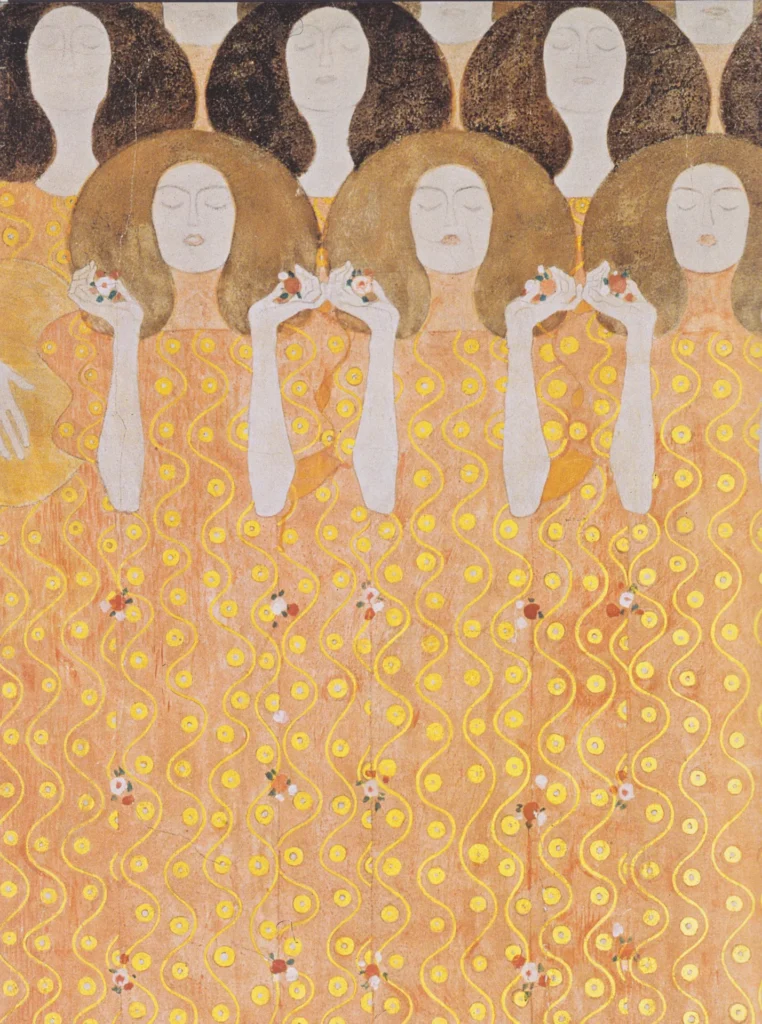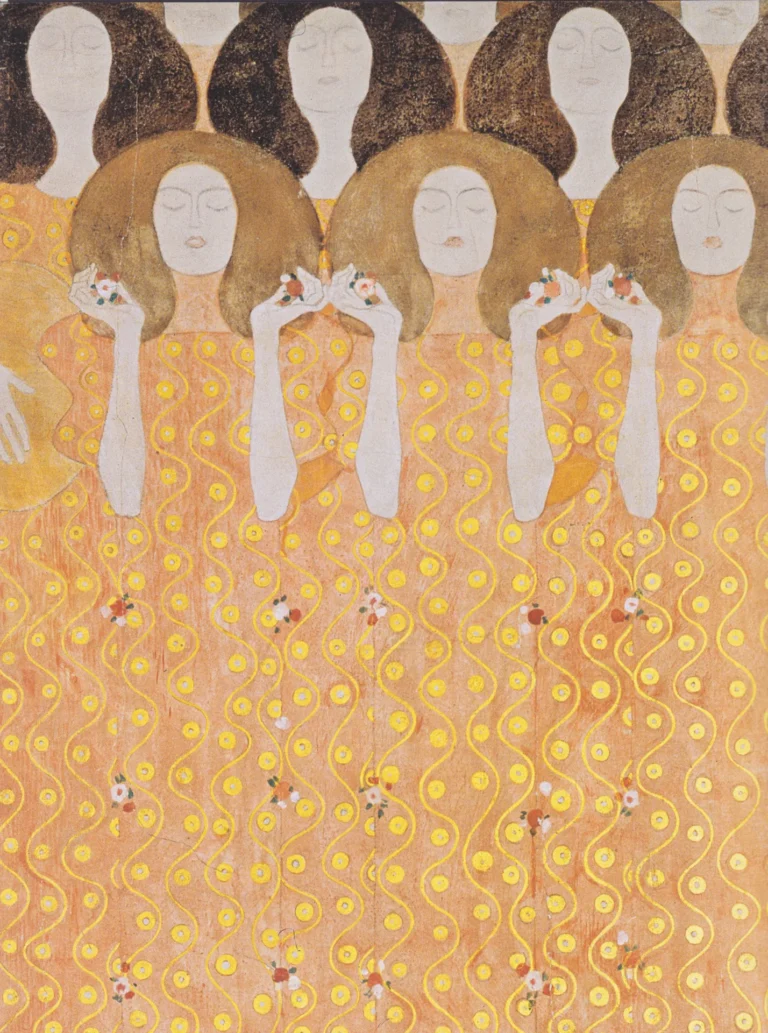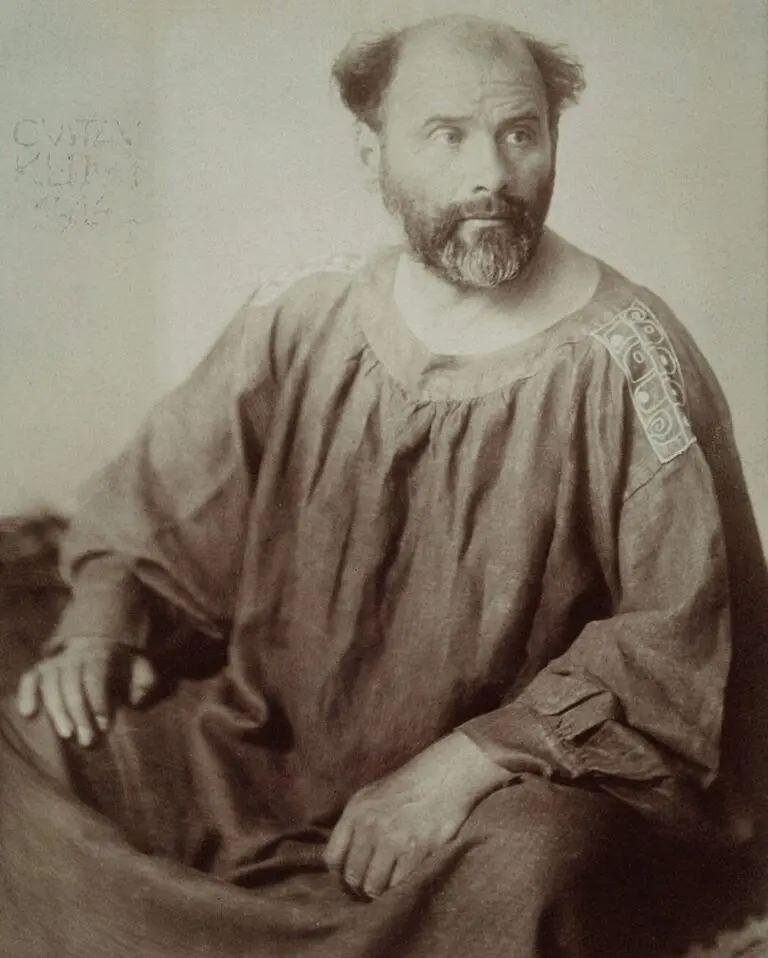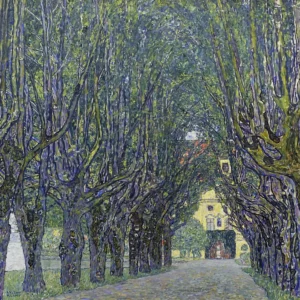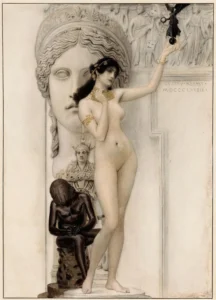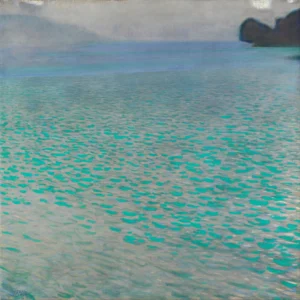Beethoven Frieze, Secession Building, Vienna, Austria
The Beethoven Frieze, a breathtaking artwork by Gustav Klimt, was crafted for the 14th Vienna Secessionist exhibition. Spanning over 34 meters, it illustrates the profound themes derived from Beethoven's Ninth Symphony and Schiller's 'Ode to Joy'. The frieze is a rich tapestry of allegory, featuring floating genii, daunting figures, and a final triumphant embrace symbolizing the fulfillment of happiness. Klimt's gold-laden style combines diverse artistic influences, making it a masterpiece of early 20th-century art.
1901 - 1902
About the Artwork
Created as a tribute to Ludwig van Beethoven during the 75th anniversary of his passing, the Beethoven Frieze embodies Klimt's belief in the fusion of art forms. Initially exhibited alongside works by other prominent artists, it narrates a profound quest for joy through the trials of humanity. The frieze's imagery moves from yearning for happiness to the ephemeral nature of existence, prominently showcasing Klimt’s iconic use of gold. Though met with mixed reviews at first, its preservation through tumultuous times—including confiscation by the Nazis—further underscores its importance in art history.
Did You Know
Liked what you see? Add it to your collection.
Enjoyed reading? Share it.
... continued
The Beethoven Frieze
is a seminal work by Gustav Klimt, created in 1901-1902 for the 14th Vienna Secessionist exhibition. Here are some key points about this artwork:
Creation and Context
The frieze was painted as part of a larger tribute to Ludwig van Beethoven, marking the 75th anniversary of his death. It was conceived as a total work of art, integrating various artistic disciplines, including architecture, painting, and sculpture. The exhibition featured a central statue of Beethoven by Max Klinger, along with contributions from other artists such as Alfred Roller, Adolf Böhm, and Ferdinand Andri.
Design and Themes
The Beethoven Frieze is a large and complex work, measuring 2.15 meters high and 34.14 meters wide, and it weighs four tons. It is divided into three walls and depicts a narrative inspired by Richard Wagner's interpretation of Beethoven's Ninth Symphony and Friedrich Schiller's 'Ode to Joy,' which Beethoven set to music in the final chorus of the symphony. The frieze begins with floating female genii symbolizing the longing for happiness ('Die Sehnsucht nach dem Glück'). It then portrays the suffering of weak mankind, followed by threats such as lust, intemperance, and disease, personified by figures like Typhoeus and the three gorgons. The narrative culminates with the appearance of a knight in shining armor, representing hope and ambition, and ends with the figure of Poetry and the embracing couple, symbolizing the attainment of happiness through the arts and love.
Materials and Style
The frieze was painted using a variety of materials, including charcoal, graphite, black, red and colored chalk, pastel, casein colors, gold, silver, gilt stucco, and various applications like mother-of-pearl buttons and semi-precious stones. Klimt's characteristic use of gold leaf is prominent, and the work combines elements from Ancient Greek, Byzantine, early medieval, and Japanese art styles.
Reception and History
The Beethoven Frieze received a mixed reaction at its debut, with some praising its innovation and others criticizing it for its explicit content and perceived obscenity. The work was initially intended to be ephemeral but was preserved due to its significance and the efforts of collectors like Carl Reininghaus and August Lederer. During World War II, the frieze was confiscated by the Nazis and later recovered from the Altaussee salt mine. After a lengthy restoration process, it was returned to the Secession Building in 1986, where it is now on permanent display.
Current Display
The Beethoven Frieze is currently housed in the basement of the Secession Building in Vienna, Austria, on permanent loan from the Österreichische Galerie Belvedere. Visitors can view the frieze in a climate-controlled room, and since 2020, they have also had the option to listen to Beethoven's Ninth Symphony while viewing the artwork.




